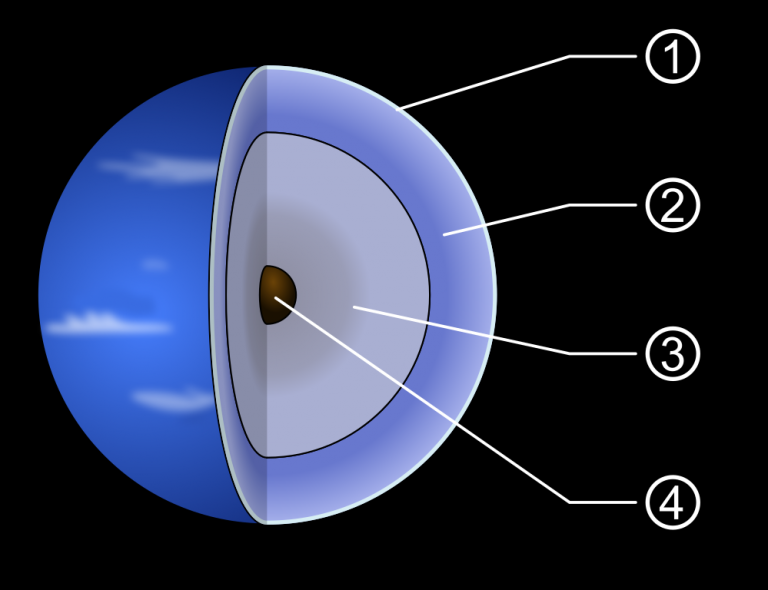

Neptune as seen by Voyager 2 Source: NASA It takes over 164 Earth-years for Neptune to make a single orbit around the sun, meaning it was last where it is now back during the Civil War in 1857. It is the third most massive (heavy) planet in the solar system behind Jupiter and Saturn. It is slightly smaller in diameter due to being slightly more massive (gravity pulls harder so the atmosphere is a little thinner). Neptune is essentially a nearly identical twin to Uranus. After its discovery there was a fight over naming between countries but eventually the name “Neptune” was settled on, after the Roman god of the Sea. This gives Neptune the distinction of being the only planet to have been known to exist before it was actually seen through a telescope. Over 20 years later a pair of astronomers named Johanne Galle and Urbain Le Verrier used mathematical predictions to finally find and observe the planet for the first time. Then, in the early 1800s Alexis Bouvard recognized that the orbit of Uranus didn’t seem to line up with what was expected and he theorized there must be a large planet lying beyond it, the original Planet X. Due to an incredibly unfortunate circumstance he viewed the planet when it was moving “retrograde” or backwards in the sky relative to the stars around it, making it very difficult to determine as a planet. Neptune was first noted by Galileo back in 1612, but he did not realize it was a planet. Far out in the unfathomable reaches of our Solar System lies the last planet: Neptune.


 0 kommentar(er)
0 kommentar(er)
